- Author: Mariah Coley
- Author: Aubrey White
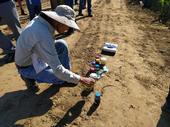
On a recent late-summer Wednesday, a freight container filled with cases of expired Muscle Milk protein drink awaited unloading at the UC Davis Renewable Energy Anaerobic Digester (READ) while a front-loader scooped heaps of spoiled vegetables into a mechanical processor. Nourished by a diet of assorted food waste from the UC Davis campus and area restaurants and markets, READ harnesses the activity of billions of microbes to produce biogas capable of generating 5.6 million kWh per year of clean electricity for UC Davis.
But a by-product of READ and other anaerobic digesters – the slurry of leftover solid and liquid material, or digestate – has caught the attention of UC Davis researchers interested in “closing...
- Author: Melissa G. Womack
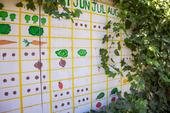
For many gardeners' spring and summer months are synonymous with growing edible gardens, but home vegetable gardening doesn't have to end when cool fall temperatures arrive. This fall, take advantage of California's unique climate that makes it possible to grow a variety of crops throughout the year.
Warm vs. cool season crops
Most vegetables are classified as either a warm season or cool season crop. This designation is based on the temperature range that the plants thrive in. Warm season crops grow best when the days are long and the temperatures are high (between 65°-95°F). In contrast, cool season crops grow and produce the best quality produce when the average temperatures are...
- Author: Brenda Dawson
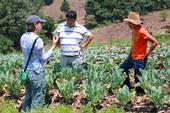
Connecting 9,000 rural households in Guatemala with improved water management and climate-smart agriculture strategies is the goal of a new project led by a team at UC Davis, to ultimately increase food security and reduce poverty in Guatemala's Western Highlands.
Called MásRiego (“more irrigation”), the project aims to increase farmers' incomes and their use of climate-smart strategies, including drip irrigation, rainwater harvesting, reduced tillage, mulch use and diverse crop rotation. To enable farmers to adopt these new practices, the team will not only provide trainings but also build partnerships to increase farmers' access to needed micro-credit financing and irrigation...
- Author: Penny Leff
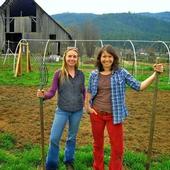
This time of year, most farmers don't get much sleep. Tomatoes, pears and peaches often ripen in the Sacramento Valley faster than the harvest crews can pick them, even working 12-hour days. But this is also the season that some farmers are happy to show off their farms to visitors, inviting guests to enjoy the delightful flavors and beauty of the harvest in a pause from the bustle. UC Cooperative Extension hosts an online agritourism directory and calendar, www.calagtour.org, to help Californians find farms and ranches to visit. Here are a few upcoming opportunities for summer fun on California farms, pulled from the calendar:
- Plumas County...
- Author: Jeannette E. Warnert
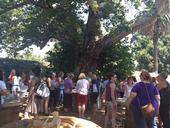
The San Joaquin-Sacramento River Delta is considered by local farmers to be the birthplace of integrated pest management, said Cathy Hemly of Green and Hemly farms on Randall Island.
"A group of pear growers, working with ag extension, came up with IPM," Hemly said.
Hemly shared the IPM history during a tour of the delta for the International Food Bloggers Conference (IFBC), held over the weekend in Sacramento.
Hemly said about 50 years ago, pear farmers were faced with growing pest resistance to the pesticide glutathione, which was used routinely to control coddling moth.
"Growers got together with a...



